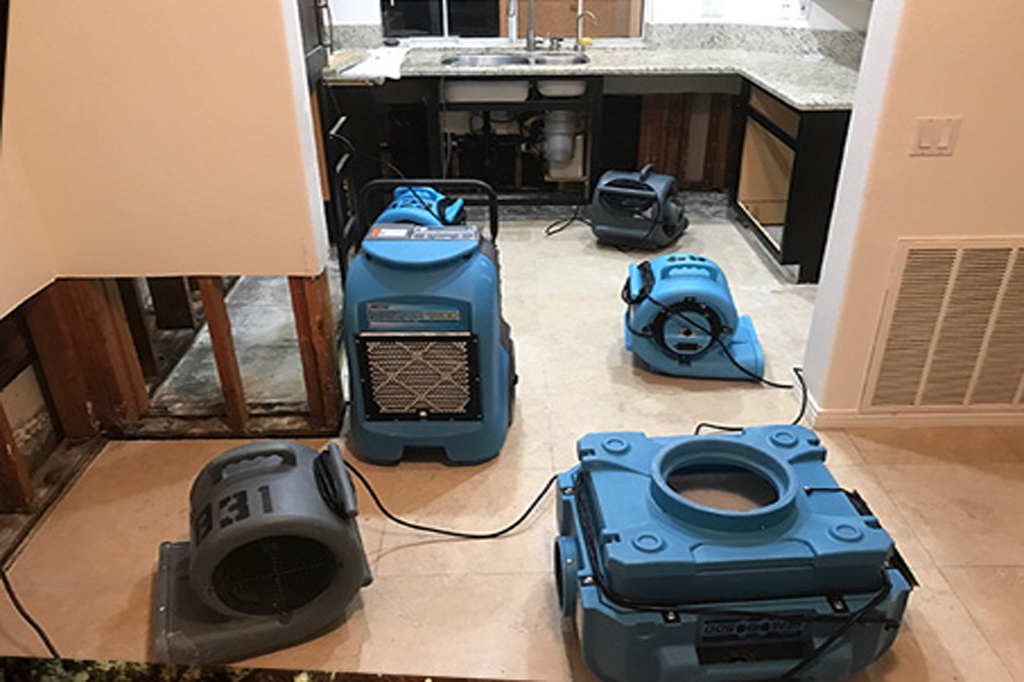
Structural drying is a simple concept: Remove excess moisture from wet materials that make up the structure until it reaches a reasonable approximation of a dry standard or goal. Therefore, drying wet buildings involves removing trapped moisture in building materials (e.g. drywall, dimensional lumber, concrete, etc.).
When water has leaked into your property, drying it thoroughly can save you stress, headache and costly future repairs.
Structural drying is a critical part of your clean-up process and only quality professional attention by experienced structural drying specialist is truly efficient and effective.
Complete care for your structural drying needs means drying your subfloor, walls, ceilings, crawl spaces – and more.
For peace of mind that your property will be restored to a dry condition, we use the latest technology and keep up-to-date with the latest drying techniques ensuring your property stays protected and in great condition.
Our drying equipment helps remove all moisture from the air, while extracting moisture from hard wooden floors and other hard floor surfaces. High velocity fans and dehumidifiers ensure thorough attention to your property, with every trace of moisture removed for a property that is structurally safe and strong.
Drying is about more than just removing all traces of water. As well as helping remove unwanted damp smells, our drying techniques reduce the risk of potentially dangerous micro-organisms and bacteria that can thrive in damp conditions.
Removing the risk of mould and mildew keeps your property clean and healthy as well as being a positive way to relieve respiratory issues for asthma and allergy sufferers
But how does it work? Here’s a quick overview of the process:
On the top of a restorer’s priority is to mitigate the extent of water damage. This is done by identifying the already damaged area using probes and infrared tools. The restorer also looks for the water source to check if other kinds of structural repair—for example, fixing a leaking pipe—are necessary.
By assessing, categorizing, and classifying the water damage, restorers will know which cleanup method and equipment to use. This is according to the standards set by the Institute of Inspection Cleaning and Restoration Certification.
For example, there are four classes of water damage, ranging from Class 1 (least amount of water absorbed and evaporated) to Class 4 (specialty drying situations). Meanwhile, there are also three categories of water causing the damage. These are namely Category 1, or a clean water source; Category 2, pertaining to gray water; and Category 3, grossly unsanitary water such as floodwater, sewage, and water contaminated with feces.
Based on the data accrued during the previous steps, work on the water-damaged area will finally commence. Restorers will use a variety of equipment to clean up and dry the area, such as air movers and dehumidifiers. They will also dry furniture, dispose of unsalvageable items, and deal with other materials damaged inside the structure during this step. This process is called content manipulation.
Of course, the drying process won’t be overnight. Equipment installed in the area will be left to work for a three or four day period, with daily inspections to determine the status of the area. Workers will check the place’s temperature, humidity, and moisture content during these inspections. They will also check if additional measures should be done to hasten the drying process.
The drying process will only be considered complete when certain criteria are met.
Due to the special equipment and expertise needed for structural drying, hiring a professional restoration company is a must. Call us on 0405 554 247 for a 24/7 Emergency Response.